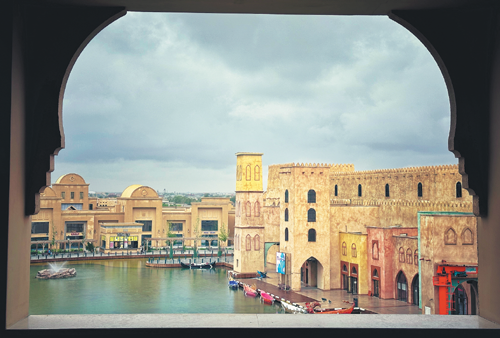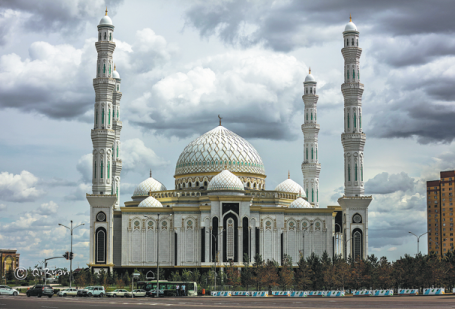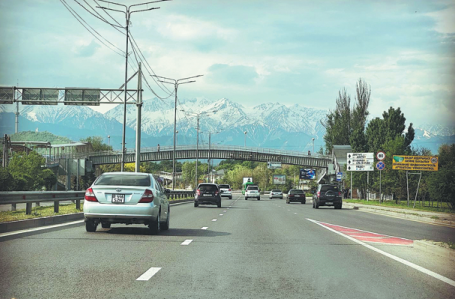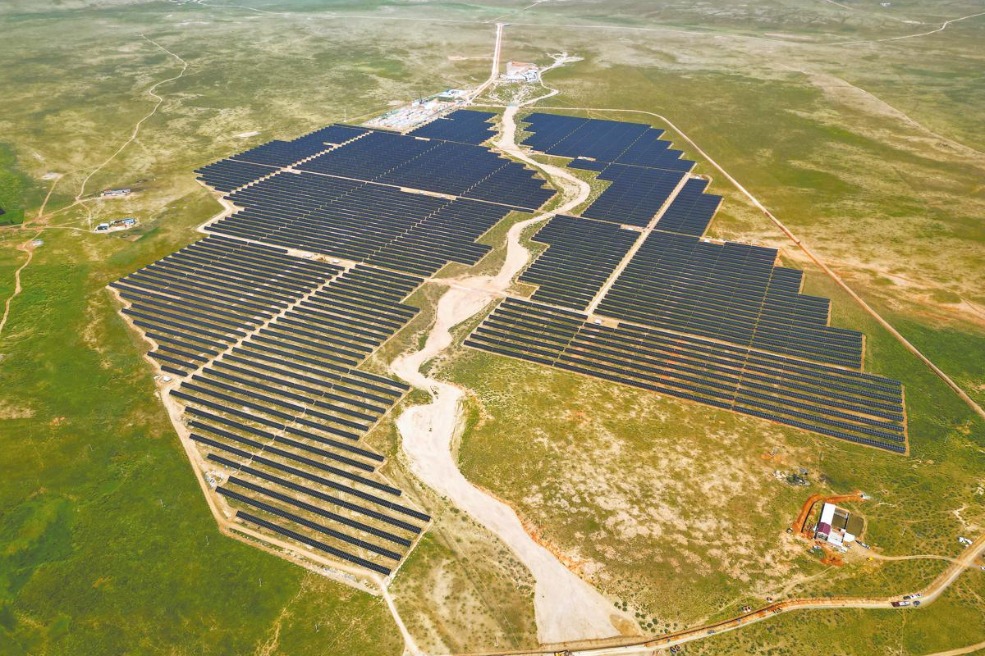Diverse experiences await travelers in Kazakstan
Country offers up both ancient and modern wonders for all to see

Though once secluded, even inaccessible, Kazakhstan today welcomes intrepid travelers with open arms.
Kazakhstan is the world's largest landlocked country, and the ninth largest in the world. The country is one of the most economically advanced in Central Asia, thanks to its abundant oil reserves and other valuable minerals.
Even for some experienced travelers, Kazakhstan is still an unfamiliar state. While home to the raw beauty of the steppe and mountain scenery, there are no yurts like in Kyrgyzstan or Mongolia. The country also boasts a fascinating history of medieval Islamic architecture.
But for those who have stepped foot in the country, its most attractive features are its unique landscapes, dripping with freedom. On top of that, singular experiences include the Baikonur Cosmodrome, the Semipalatinsk Atomic Test Site, the landscapes of Mangystau, the balbal of the steppe, glitzy Astana and the magnificent Altai.
If history and politics are your main interests, Kazakhstan is a captivating choice as a country with a prominent Soviet legacy, massive industrialization and subsequent ghost towns, space launches and atomic bomb tests, gulags and banished Russian intellectuals like Dostoyevski, Solzhenitsyn, Eisenstein and Trotsky.
So when grappling with planning a trip to such a gigantic, and historically closed-off country, it's hard to know where to begin. The solution? Almaty.
The country's former capital city is a perfect introduction to modern Kazakhstan. Thanks to some stunning Soviet-modernist and Tsaristera architecture, it's a beautiful city where the food, drink and night scenes are flourishing and various spectacular areas of natural beauty are within easy reach.
The first stop of any trip to Almaty should be Panfilov Park. This charming park in the eastern-center of the city is teeming with places of interest that offer a whistle-stop tour of the city's history. The park contains a notable war memorial to the 28 soldiers of an Almaty infantry unit who died fighting Nazi forces outside Moscow during World War II, with several huge black monuments and an "eternal flame" commemorating their sacrifice. Not far behind the largest of them is the pastel-yellow, green and red Tsaristera Ascension Cathedral, a visually striking structure that is claimed to be one of the tallest wooden buildings in the world.
On the park's eastern border is the Kazakh Museum of Folk Musical Instruments, a traditional wooden Russian building built at the same time as the cathedral, where, for a small entry fee, visitors can see over 1,000 traditional instruments dating back as far as the 17th century.
A block north is the Green Market, a giant, quintessentially Central Asian market that is a must-visit, and one of the city's best people-watching spots.
A few hours' drive northeast of the city is Altyn-Emel National Park, a 4,600-square-meter UNESCO World Heritage site. Though it takes a while to get to, Altyn-Emel is one of the most accessible and convenient options to get a taste of the glorious scenery of Kazakhstan's vast empty spaces.
Among Altyn-Emel's wonders are the otherworldly red, orange and white-colored hills of the Aktau Mountains, and all manner of rare flora and fauna including wild donkeys, Persian gazelle, Siberian toad and the 700-year-old "sacred tree". Most incredible of all is the "singing Dune", an ancient 150-meter-high geological oddity rising up from the steppe that makes a sound like an organ when its sands move. There are many guesthouses in small towns near the park, and passes to enter must be bought in advance.
Whether its hiking around Altyn-Emel or pounding the pavements in search of yet another Soviet-modernist architectural wonder, weary travelers in Almaty can take a trip to the Arasan Baths to get some welcome rejuvenation.
Immediately to the west of Pankilov Park, Arasan is, from the outside, a hulking Soviet brutalist complex covering almost an entire block, but the atmosphere switches from imposing to comforting once inside the building. A huge menu of massage treatments is available, and for about 7000 KZT (around $15) customers can spend as long as they like in the spa's many saunas and steam rooms, and cool off in its ornate grand circular pool.
If time permits, it is worth visiting the marvels of Charyn Canyon. Over millions of years, the swift Charyn (Sharyn) River has carved a truly spectacular canyon reaching a depth of 300 meters in the otherwise flat steppe some 200 km east of Almaty, and time has weathered it into unique and colorful rock formations.
The most popular section, the Valley of Castles, is accessible by a regular car; for the rest, a four-wheel drive vehicle would be necessary. This section is accessible by either a guided tour from Almaty, driving, or taking public transportation and then hiking the rest of the way.
From the car park, a rough 3 km road descends into the Valley of Castles, with some spectacular red rock formations reminiscent of Utah or Arizona, before ending at the Charyn River. It's an idyllic spot, but apart from taking a quick and very cold dip near the shore, swimming is dangerous, as the river is deceptively fast.
Armed with a vehicle and GPS(or on a tour with a knowledgeable guide) it is possible to access more remote parts of the canyon, and marvel at the contrast in scenery. The Yellow Canyon is a sculpted, arid moonscape, while from a more precipitous viewpoint, high above the river, there are tremendous views over bare, dark slopes, crisscrossed with precarious paths used by nimble-footed mountain goats, visible to those with enough luck, and the right pair of binoculars.
What makes an exploration of Kazakhstan so exciting, besides the unbounded freedom, is its surprising diversity. Northern Kazakhstan is a case in point. There is still plenty of steppe on offer, but the scenery edges into a more Siberian style of terrain. It's colder and wetter. Trees and lakes start to dominate. The ethnic mix changes.
And at the center of it all, Astana prevails. It is often called the Dubai of the Steppe, which is an apt nickname in many different ways. The area is simultaneously an agricultural powerhouse, an industrial monolith, and a spacious camping ground.
Further to the east lie more hidden gems ready to be discovered. Semey and its surroundings have surprising tales to tell, while Ust-Kamenogorsk forms the gateway to the storied Altai Mountains.
It was only last year that the city changed its name back to Astana. Yet this is not the first namechange that the Kazakh capital has undergone. Founded in 1830 as a Russian fortress, the city was called Akmola, meaning White Tomb in Kazakh. In 1961 it was renamed to Tselinograd, meaning Virgin Lands City, after a Soviet program to boost agricultural output and stop food shortages. It reverted to being Akmola after the fall of the Soviet Union in 1991 and remained so for three short years.
It was Kazakh former president Nursultan Nazarbayev who moved the country's capital city from Almaty in the south to Northern Akmola in 1994, and in 1998 the city underwent yet another name change — Astana.
It is difficult to believe today that when the capital was moved from Almaty in 1997 it was just a dusty little village. Since then it has gone through a building boom, transforming it into a futuristic city full of modern, quirky architecture all funded by the country's vast oil and energy resources.
Modern Astana, much like Dubai, is a beacon of wealth and opulence. The city is filled with shopping malls and sprawling offices. Though it may not be home to ancient wonders or historic heritage, the area is worth a look for the architecture alone.
When visiting the city, the most popular area is between the Presidential Palace and Khan Shatyr shopping mall.
This area has some of the most interesting things to do within Astana. And simply by following the main street from one side of the city to another, visitors will have the chance to see everything on offer.
Travelers taking a route from east to west will first come across the Presidential Palace, a representation of which can be found on the 10,000 tenge banknote. Other noteworthy stops include: the Golden Towers, known by locals as "beer cans"; the Singing fountains, part of a network of fountains built across the city to aid in irrigation and create a favorable microclimate, and the Bayterek tower, a new symbol of the city which can be seen on every banknote in the country. Based on a Kazakh folk legend, the tower shows a mythical egg sitting in a mythical tree. It's possible to take an elevator all the way up to see the egg and get a view of the downtown area of the city in all its glory.
Moving further to the west is the Nur-Astana Mosque, the third-largest mosque in Central Asia that can fit up to 5,000 worshippers; the Kaz-MunayGas Headquarters, the unique design of this building stands out within the city and shows the importance of the gas industry in the country; the Abay Opera House, built in 1941, and was designed with a unique blend of European, Stalinist and Kazakh architecture and finally the Khan Shatyr Entertainment Center, built to look like a monumental tent, the center is the highest structure of its kind in the world and is worth visiting for this reason alone.
Another location of note is the National Museum of the Republic of Kazakhstan. This huge museum constructed from blue glass and white marble covers the history and culture of Kazakhstan from ancient to modern times.
Themed halls are filled with interactive displays and artifact exhibits, ranging from a yurt in the Hall of Ethnography to a chronicle of the capital's modern history in the Hall of Astana.
Visitors are welcomed into the grandiose entry hall by a giant golden eagle soaring over a vast map of the country. Highlights include the Hall of Ethnography, with its rich collection of objects related to Kazakhstan's nomadic culture.
A particular standout is the Golden Hall, which houses several thousand Bronze Age ornaments from the famed "Golden Man" burial site (a national symbol of Kazakhstan) — a 3rd or 4th century dog site where a warrior whose gold-clad remains were uncovered in 1969.



Today's Top News
- Lawmakers review draft law to expand childcare services
- China's new-style tea brands find a hot new market in US
- Xi extends congratulations to Chilean president-elect
- Japan urged to stop provocative moves
- Shanxi ends province-wide blanket fireworks ban
- Tech park set to lift GBA's development






























